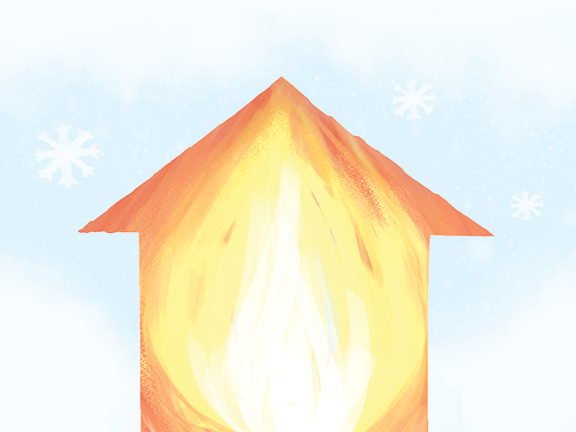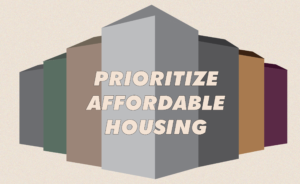As temperatures dropped below freezing in January and early February this year, homelessness outreach organizations scrambled to provide resources and shelter to the nearly 5,000 people currently experiencing homelessness in D.C. This winter also brought dangerous wind chills and the first snow in two years to D.C., creating additional hypothermia risk, and prompting outreach groups throughout the city to ramp up their efforts.
“Many service providers throughout the city conduct additional outreach to care for the unsheltered community [during the winter],” Ray Shiu, deputy director of the Center for Social Justice and a leader for Homelessness Outreach Meals and Education (HOME), wrote in an email to the Voice. “This is an all-out effort with different organizations conducting this outreach and additional city services available.”
Organizations that provide cold-weather supplies as part of their street outreach include groups like the Georgetown Ministry Center (GMC), as well as university-affiliated groups like HOME and Homeless Outreach Programs and Education (HOPE). HOME also operates the Hypothermia Outreach Team (HOT) during the winter to help provide supplies and do wellness checks for people experiencing homelessness.
“With HOPE, a lot of our focus has [been on] Friday Foods,” Elise Merchant (CAS ’25), co-president of HOPE, said about their weekly initiative to package and distribute meals for people experiencing homelessness. “It has been difficult coming into the winter: we come, and we give them food, and people are like, ‘I’m not hungry. I’m cold.’”
Cold temperatures during hypothermia season, which runs from November through March, put people experiencing homelessness at risk of death from exposure. Years with heavy snowfall, such as 2024, can be especially dangerous.
“Snow often collapses tents and other structures that people have constructed to keep themselves out of the elements. Snow can really wreak a lot of havoc on those kinds of encampments,” Kelly Ann Andreae, executive director of GMC, said.
There are some government services that seek to support people experiencing homelessness during harsh winter weather.
D.C. is a “right to shelter” city during hypothermic conditions, meaning the government must guarantee and provide shelter to anyone who needs it when temperatures fall below freezing. However, there are many reasons someone may choose not to use these shelters. For example, many shelters limit the number of bags or possessions a person can bring, and some individuals don’t feel safe at shelters, Andreae explained.
Hypothermia shelters also only operate from 7 p.m. to 7 a.m. in D.C., leaving individuals experiencing homelessness with fewer shelter options during the day.
“[If] there’s a snowstorm or severe weather of some kind, often a lot of the places that people stay and protect themselves from the elements, like the libraries or other public spaces, will close early or close down altogether. That further limits the safe spaces that people have to get out [of] the elements,” Andreae said.
The lack of open public spaces during snow storms puts increased pressure on outreach organizations to provide life-saving supplies to individuals experiencing homelessness, like warm clothing, blankets, and sleeping pads. At the same time, some groups struggle with insufficient resources or volunteers, especially during the winter.
“Our sign-ups for HOT have declined this season, but we hope that the Georgetown community pitches into this effort,” Shiu wrote.
Organizations also struggle to provide services when they lack volunteers.
“Obviously, with the weather and everything, usually we have less people that come to our events,” Laura Montgomery (CAS ’26), co-president of HOPE, said. “It’s a lot harder for us to carry 50 meals between, let’s say, five people, versus 20 people.”
Organizations serving people experiencing homelessness have struggled to meet the growing need for their services year-round. In 2023, homelessness increased by 11.6 percent in D.C., yet the Department of Human Services is pushing for budget cuts for homelessness services and nonprofits this year.
Student leaders encouraged other students to volunteer, support homelessness advocacy, and learn more about housing inequality in D.C.
“My dad’s from D.C., he grew up in Anacostia, and so seeing a lot of the gentrification that has happened since he’s grown up here, and all of the push-out, and just a lot of homelessness is a result of gentrification,” Merchant said.
Economic development in D.C. has caused some of the greatest levels of displacement in the country, pushing low-income residents out of their homes and neighborhoods, and sometimes out of the District entirely.
High rents in D.C. contribute to housing instability, with 25 percent of renters being considered “rent-burdened”—spending 30 percent or more of their income on rent. Disparities by race are also apparent: while 32 percent of renters of color are rent-burdened, only 13 percent of white renters are.
Merchant believes it is important for students to be involved with homelessness outreach programs.
“[Through HOPE,] we’ve just been able to have a lot of people voice their stories with their homelessness and take away a lot of stereotypes, and have people directly interact with the community and help that community,” Merchant said.
There are a number of ways students can support people experiencing homelessness, whether through advocacy work or day-to-day interactions in the Georgetown community.
“Each of us have the ability to support our unsheltered neighbors—be it through supporting organizations like Georgetown Ministry Center, Friendship Place, Miriam’s Kitchen, mutual aid groups, or other great organizations in D.C.—or keeping an eye out for people and calling D.C.’s hypothermia hotline if someone needs additional support,” Shiu wrote in his email.
Some outreach leaders also emphasized the impact of simply treating people experiencing homelessness with respect and compassion. Engaging with someone experiencing homelessness can make them feel included in the community, and thus more likely to seek services, according to Andreae.
“There’s a lot of fear for folks around the unhoused population, and it’s not really necessary. But being homeless is a really isolating experience,” Andreae said. “So being friendly, saying hi, making eye contact, and just treating people as humans is always what I encourage folks to do.”





